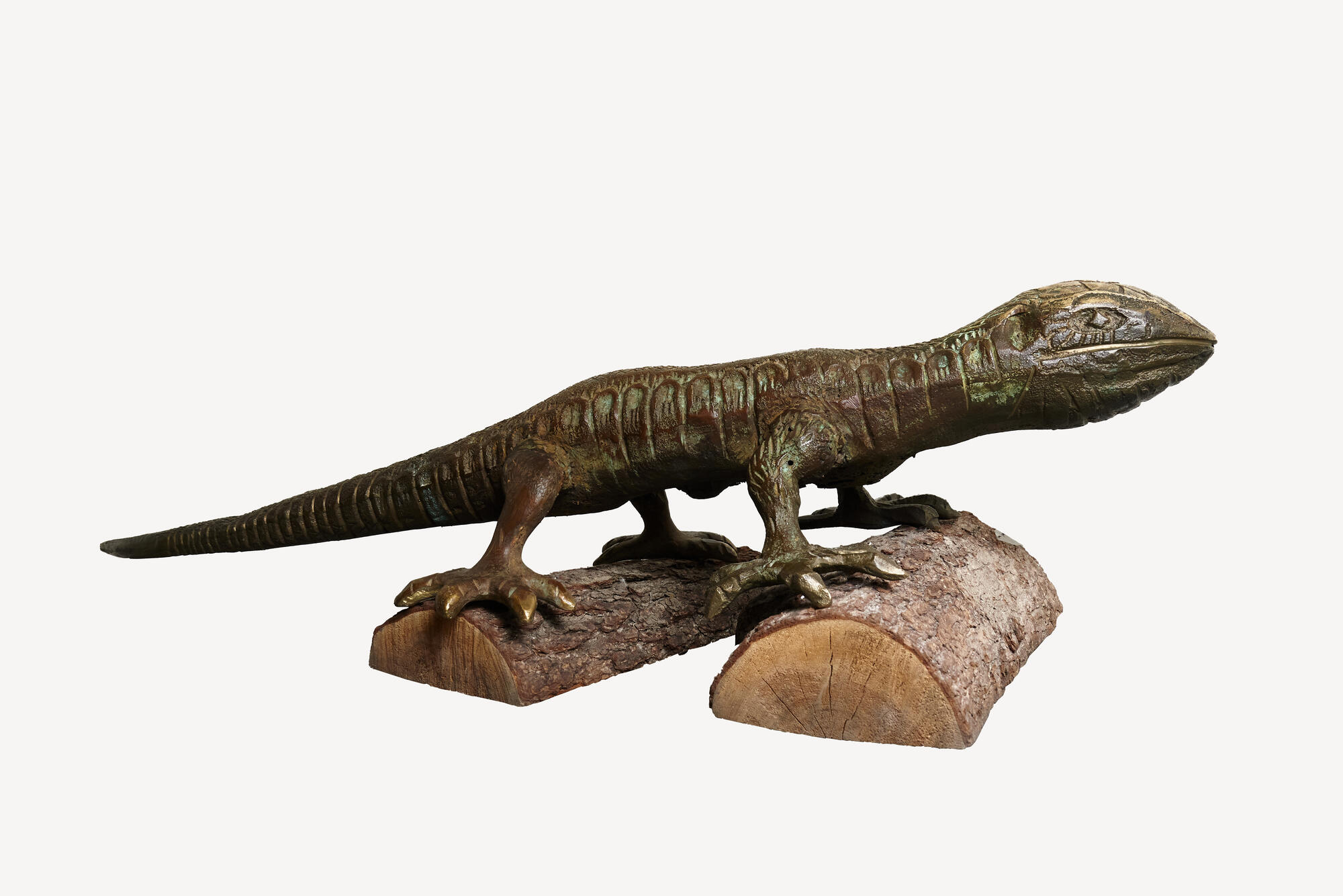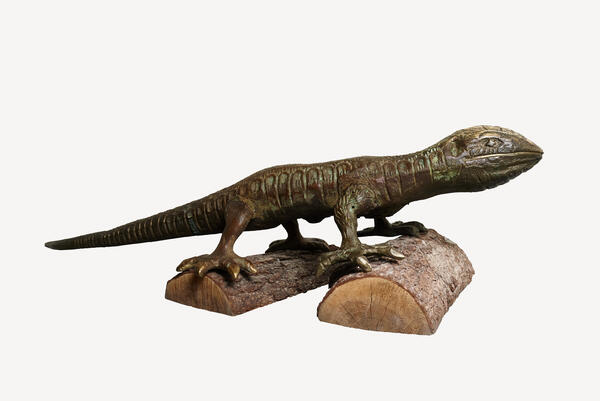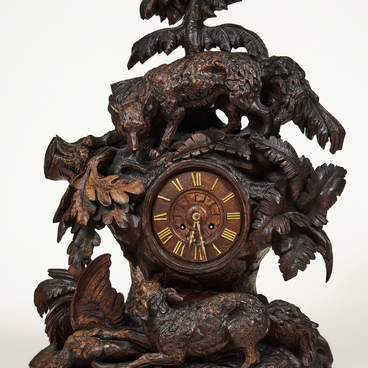The statue of a lizard from the museum’s collection belongs to the class of garden and park decorative sculpture. A rather massive figure is made of bronze, which looks nice in the sunlight. There is an interesting story as to how the statue was donated to the museum by Nikolay Polyakov, the head of the local government in Gorodets. It had been brought from Saint Petersburg to the Gorodets plant together with scrap metal. Fortunately, the statue drew the attention of local workers, and it grieved them to melt it. They offered the find to Polyakov.
At that time, the lizard only had one drawback: it was missing three legs. However, Nikolay Fedorovich Polyakov found a craftsman who was able to cast the missing parts. The statue was saved and donated to the museum. Today, visitors are allowed not only to touch the lizard but they can also sit on it.
Garden statues of this type came to Russia from Europe during the reign of Peter the Great. It was one of the fashion trends that he adopted and popularized in his country. The tradition of decorating gardens with works of art originated in ancient Greece, which was home to such famous places as the Academy gardens, where Greek philosophers held their meetings.
Often, various garden statues formed ensembles and were perceived as a single piece. Such ensembles can be found in the baroque gardens, with Versailles being the most well-known example of them all. Another famous ensemble is the Tuileries Garden in Paris.
The classicism gardens were more restrained: the landscape was valued above all things and was supposed to reflect the harmony of nature and culture. There were few statues there, and most of them served as a tribute to antiquity. The classicists brought the ancient Greek gods and muses, mythological characters, cupids, and obelisks back into fashion. The Arkhangelskoe Estate in the Moscow region is a good example of the classicism garden. Also, animal sculptures have a symbolic meaning. For example, a snake was the symbol of wisdom, a turtle symbolized long life, and a lizard stood for eternity.
At that time, the lizard only had one drawback: it was missing three legs. However, Nikolay Fedorovich Polyakov found a craftsman who was able to cast the missing parts. The statue was saved and donated to the museum. Today, visitors are allowed not only to touch the lizard but they can also sit on it.
Garden statues of this type came to Russia from Europe during the reign of Peter the Great. It was one of the fashion trends that he adopted and popularized in his country. The tradition of decorating gardens with works of art originated in ancient Greece, which was home to such famous places as the Academy gardens, where Greek philosophers held their meetings.
Often, various garden statues formed ensembles and were perceived as a single piece. Such ensembles can be found in the baroque gardens, with Versailles being the most well-known example of them all. Another famous ensemble is the Tuileries Garden in Paris.
The classicism gardens were more restrained: the landscape was valued above all things and was supposed to reflect the harmony of nature and culture. There were few statues there, and most of them served as a tribute to antiquity. The classicists brought the ancient Greek gods and muses, mythological characters, cupids, and obelisks back into fashion. The Arkhangelskoe Estate in the Moscow region is a good example of the classicism garden. Also, animal sculptures have a symbolic meaning. For example, a snake was the symbol of wisdom, a turtle symbolized long life, and a lizard stood for eternity.



